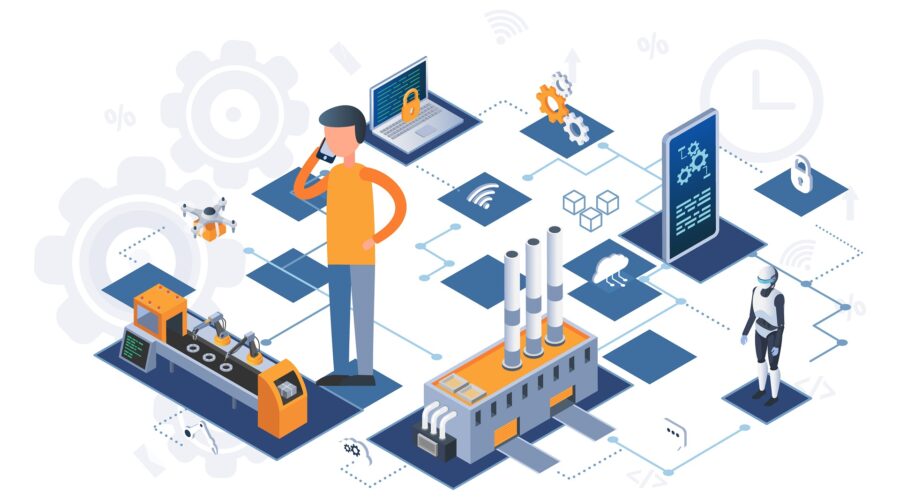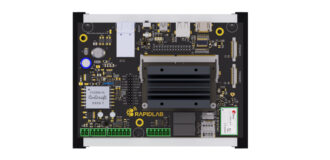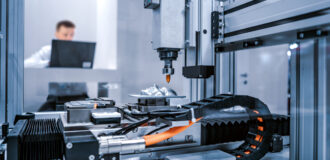13th April 2021


Greater control over product quality, reduced investment costs, and the ability to eliminate errors are just some of the benefits that rapid prototyping offers.
In times of digital transformation, entrepreneurs are looking for ways to make even better use of technology in their business. They all want to increase revenue and optimize costs, which can now be achieved by bringing intelligent products to market and connecting physical assets to information processing systems. In practice, it means equipping previously offline objects and facilities with electronics to make them smart and connected assets.
Every company cares about its good reputation, and this opinion could be jeopardized if new solutions are not properly tested before launching serial production. Undetected errors in electronic circuits or software not only put the functionality of the product at risk, but also entail the threat of huge financial and reputational damage.
Do you want to build a prototype of your product?
A guide to rapid prototyping
It’s common practice that at the beginning of the development of a new product or system, a model or prototype of the device is created to present it to investors or the management board. Safety requirements are also crucial and must be taken care of from the very start. But how do companies that, for example, build marine engines or coffee machines, supposed to prototype the electronic device and software that will make those products smart assets?
Rapid prototyping is an answer to these challenges. It’s a service that addresses the need to produce a small number of prototypes while reducing the costs of ordering these devices from an electronics manufacturer.
With rapid prototyping, we can confront computer visualization with a real, physical object. It allows us to determine whether the product, which we want to bring to the market, provides the required features, is well-designed, and will meet customer expectations. We no longer need to employ a qualified team of electronic engineers who will mold the board, create firmware or solder components. We can outsource this service to experienced technicians who have the necessary skills and tools. Additionally, if the original project did not meet the expectations, we can count on expert support to select components and system architecture.
Key business benefits
Accuracy improvement
By creating a prototype of a product or device, we can quickly verify the idea and assess the quality and functionality of a given solution, which will allow us to spot potential errors that weren’t noticed at the stage of formulating the project guidelines.
Ability to modify the project at any stage of product development
The completed prototype provides a basis for further discussions with business developers and project managers about product development progress and even for redefining the entire business concept if the outcome of the work isn’t satisfying.
Saving resources
The biggest advantage of this process is that it significantly shortens the preparation for mass production and, at the same time, reduces its costs.
Rapid prototyping and its importance in manufacturing
The need to build a prototype usually arises when ready-made devices available on the market cannot meet the company’s needs. To illustrate this issue, I want to mention two examples. Let’s say we want to carry out an automatic inspection of machines in the production hall using ultrasound to detect potential disruptions. We will need a specific device equipped with a microphone, computing power, and communication modules to connect to the cloud in a factory environment. Let’s also consider another example and imagine that we want to collect data about the operation of welding machines that we sell to customers. The welders need to be equipped with the right components and sensors to facilitate diagnostics and transmission to information processing systems. With rapid prototyping, we can verify these requirements considering the technology, features, and functionalities that need to be implemented.
Rapid prototyping methodology
Certainly, rapid prototyping is useful wherever we are dealing with a product that must meet a strict safety requirements.
Prototypes developed in RapidLab are created by experienced engineers and based on components from the best manufacturers. We use pre-certified modules from renowned companies such as Espressif, NXP, Nvidia, Raspberry Pi, SoMLabs, STMicroelectronics, Toradex, and others.
RapidLab offers rapid prototyping services to help customers digitize their assets and bring competitive products to market. The cooperation involves several stages: workshops with the client, selection, and presentation of selected hardware and software, building a mockup & prototype, and finally – tests. We use agile methodology, which means that the client has an impact on the final shape of the solution at every stage of cooperation.
See also:
Let’s stay in touch
Tell us about your IoT project and we’ll get back to you shortly.
Talk to our expert

Paweł Skiba
IoT Solution Architect


